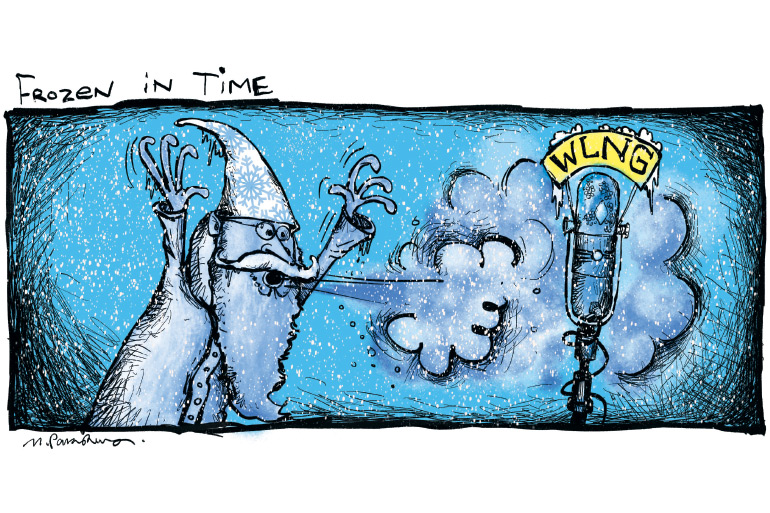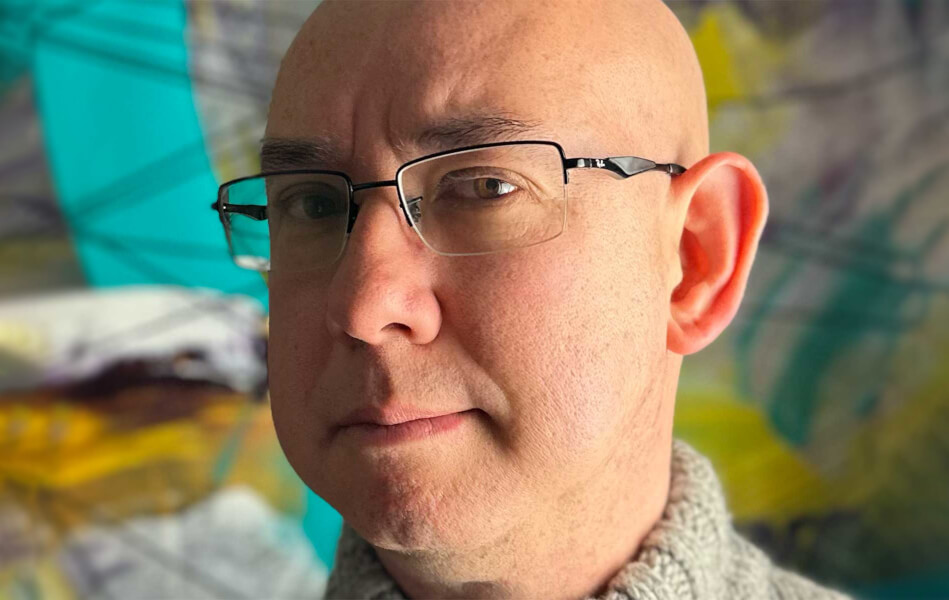Clang! Clang! Clang! WLNG Radio Should Be Declared a Historic Site

I propose that the radio station WLNG in Sag Harbor be designated a historic place. I am not talking just about its studio on Redwood Creek. I am talking also about the sound that emanates from it. If the sound of some beautiful old church bells can be considered historic, as they are elsewhere in Sag Harbor, then the unique sound of WLNG radio should be, too.
Historic to me means frozen in time. WLNG is that. It is frozen in time in the same way that the neon is on the movie theater in Sag Harbor, that the hobby horse in front of the 5 & 10 is frozen in time, the way the library and the whaling museum are frozen, all markers from the town’s wonderful past.
The thing is, WLNG is not pretending to be an old-time rock-and-roll station from the 1960s. It WAS a rock-and-roll station from the 1960s. There were many of them then. And nearly all have changed. But WLNG refused. And what you hear, with the bells jangling, the all-female jingle quartet blasting out W-L-N-G followed by the clang of a cowbell, with the birthday shout-outs for everybody and with its Swap & Shop show each morning for an hour beginning at 10 a.m.—well, that’s what we had back then. We even had back then this punched-up, excited reverb that was unmistakable. When WLNG started, there was no FM radio. There was only AM radio and it was loaded with static. The reverb cut through that. And it still does here.
WLNG was sold on October 30. The buyer paid a reported $3.9 million—$525,000 for the station’s license and assets, $125,000 for the station’s tower on Millstone Road and $3.2 million for the waterfront property on which sits the studio. The buyer, a corporation headed by Sandra Foschi, has said it will simply continue along playing rock-and-roll music. Ms. Foschi owns the physical therapy business Health SOS and has no expertise about radio that I know of. But her husband does. Bill Evans is the longtime meteorologist for WABC-TV and has been on the air since the early 1980s. It seems this treasure could have been bought for him. Good.
Here are my recollections about WLNG.
First of all, the idea for it came from a famous Montauk lobsterman and politician named Perry Duryea Jr. Duryea was the Speaker of the Assembly in Albany and was about as powerful in the state as his successors have been, for better or worse. Duryea in the late 1970s ran for governor against Governor Hugh Carey and lost. But before that, in 1961, he spoke to me about starting a radio station in Sag Harbor. Would I join him?
Dan’s Papers was founded the year before, in 1960, when I was 20. So this might have been a fair question. But I was not interested. Instead, Duryea partnered with Bob King, a businessman who ran an airline service out here called the Montauk Caribbean Airlines. And so, in 1963, it went on the air, with broadcaster Paul Sidney and soon thereafter Rusty Potz and Gary Sapiane handling the operation. Sidney and Potz spent all their efforts here for half a century, until Sidney passed away and Potz retired, and are, along with Sapiane, revered for the rock-and-roll station they began.

As for me, my first job in media was working for a rock and roll radio station in Rochester, New York. It was even before I started the paper. I was 19, a sophomore at the University of Rochester, and I had found part-time work at rock-and-roll station WHAM in that city as the “Weekend News Editor.”
This was four years before WLNG. And this station had the same reverb, the same recorded female quartet singing out the logo of the station. There were cowbells, sirens and doorbell sounds. And while the disc jockey played songs by the Moonglows, the Penguins, the Temptations and Jerry Lee Lewis, it was my job to keep an eye on the Teletype, read the daily paper and make phone calls. I had a list. I was, every hour, to call the police departments, the hospitals and the fire departments and type up the very latest as a two minute read, walk it into the disc jockey and hand it to him.
Seeing me coming—I’d be wearing a T-shirt and sneakers—the disc jockey would press a button. “And now,” a voice would say, “the four-man award-winning WHAM news team is on the air with the very latest.” Beep, beep, clang, clang.

Well, the four-man award-winning news team was during the week. On weekends it was just me, a 19-year-old in a white T-shirt.
There were just the two of us. Once an engineer came in to pick up keys to the WHAM Newswagon to drive it hundreds of miles to see how far it would broadcast. He’d call me. I’m in Syracuse. Can you hear me? Yes.
I’m in Albany.
You’re fading out in Albany.
Thus came Rock-and-Roll Radio to WLNG. It was happening all over. It was nothing unusual for Sag Harbor to have it.
Nine years into this, cowbell rock and roll stations began to change ownerships and become Country Western or All News All the Time. WLNG stayed the same. And it went on and on and on.
I’ve often wondered what all the whooping and hollering was supposed to accomplish. The closest I can come to answering this is to say that back then, in those early days, although the signal could travel 100 miles, AM radio was so staticky that sometimes you couldn’t make out what was being said. Maybe it was because the sound was all mid-range with no lows or highs, or maybe it was just a goofy way to make a lot of noise to get to be heard. Maybe it was just for fun.
Honk, honk. It sure was. And it still is.
By 1969, FM had come in. WLNG had to engineer that reverberation sound now on FM. A firm in North Carolina did it for them. Turn the dial. There was no mistaking WLNG. And I think it was Paul Sidney and the others who told Bob King just not to change it. And he didn’t.

People had transistor radios back then. You’d listen to music at the beach. But when the power went out in a storm, WLNG would speak over those radios and tell everybody everything would be okay and just stick it out. They did this even when the water from the creek overflowed the bulkhead in front of the studio and got ankle-deep in the studio itself. Once, during a storm, they smelled what seemed like wires burning and they went off the air for 10 minutes to discuss it. Maybe they’d get zapped, but the hell with it, the news had to get out. The worst of it was Superstorm Sandy. But even that couldn’t knock them down. They were, and are, beloved.
I listened to Swap & Shop the other morning.
Gary Sapiane: Hello, this is Swap & Shop, you’re on the air.
Voice: Yeah, I have some stuff. Uh. What was it? Oh yeah. I have this piece of Plexiglas, it’s about 14 inches by 18. And I want $10 for it. And I have some other things.
Gary Sapiane: What other things?
Voice: Can’t remember. Uh, you take firearms?
Gary Sapiane: No.
Voice: Uh…
Gary Sapiane: Why don’t I just give out your name and your phone number, and people could call you up directly and you could tell them.
Voice: Well now, you’re getting a little aggressive. But I’ll let that pass.
Gary Sapiane (to somebody else): Hello and welcome to Swap & Shop, you’re on the air.
Here is reality in old Sag Harbor. Long Wharf is from about 1770. The Old Whalers’ Church is from the 1840s. The American Hotel is from the 1850s. The 5 & 10 is from the 1920s. The neon SAG HARBOR sign is from the 1930s. And WLNG is from the 1960s.
Historic places all. Welcome to Sag Harbor.



